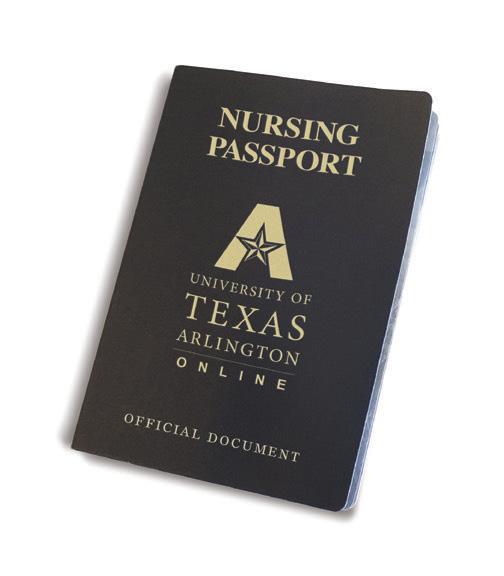
12 minute read
plus
Texas Needs Nearly 70,000 More LVNs, RNs, and APRNs by 2032
Supply and Demand Modeling Predicts High Workforce Deficit
THE TEXAS DEPARTMENT OF STATE HEALTH SERVICES just completed nurse supply and demand projections through 2032. The projections are meant to be used as a planning tool for adequately preparing the future workforce to meet the needs of the Texas population. This model highlights the importance for immediate and swift action to address the projected nursing shortages that will add up to a 47,453 deficit to the nursing workforce (measured as full-time equivalent, or FTEs) in the Texas health care sector by 2032. Texas needs to act to ensure a secure nursing workforce in the future.
RNS
Overall, the demand of most nurse types is projected to exceed the supply in every year between 2018 and 2032. There is a projected shortage of 57,012 registered nurses (RNs) FTEs by 2032 with RNs in inpatient hospital settings accounting for more than half of the growth in demand across all settings. Nursing home, residential care, and home health settings are projected to see the fastest rates of growth in demand for RNs. In response to the projected nursing shortages, the Texas Center for Nursing Workforce Studies’ Advisory Committee (TCNWSAC) recommends that more nurses need to be prepared to become faculty and the funding used for nursing faculty loan repayment programs needs to be increased.
LVNS
The shortage of licensed vocational nurses (LVNs) will also affect home health, nursing homes, and residential care settings the most with a projected shortage of 12,572 LVN FTEs by 2032. This is concerning considering the higher needs of an aging population. While the demand for LVNs is projected to grow by 46%, the supply is only projected to grow by 14% which follows the 25% decline of LVN graduates from 2011 to 2019. The TCNWSAC recommends establishing more LVN education programs in underserved areas and increasing partnerships with K-12 schools and local colleges. They also recommend that LVN programs budget for resources needed to increase enrollment. Increased funding and access is also necessary for LVN programs to have enough clinical and simulation practice to produce more graduates.
APRNS
As for advanced practice registered nurses (APRNs), the supply of certified nurse midwives and clinical nurse specialists is projected to not meet the demand by 2032, while nurse practitioners and certified registered nurse anesthetists are projected to be in higher supply than demanded between 2018 and 2032. The TCNWSAC recommends that the legislature continue funding the Nursing Shortage Reduction Program and reprioritize funding of APRNs to focus on the roles that are experiencing shortages, rather than general funding for all types of APRNs. The TCNWSAC also recommends creating opportunities to increase understanding of the different advanced practice roles, specifically nurse practitioners and clinical nurse specialists and their respective roles in hospital-based practice. Increased understanding will help employers recruit and hire the most appropriate practitioners for their positions and improve understanding of future APRN workforce needs. For more reports and technical information concerning the projections, visit: dshs.texas.gov/chs/cnws/Nursing-WorkforceReports/. For more data, including projections by geographic region and nurse type, visit: healthdata.dshs.texas.gov. i
If not now, when?


The faculty team at Cizik School of Nursing are nurse educators, practitioners, scholars, and internationally recognized researchers committed to educating tomorrow's nurse leaders. Educated in many of the nation's leading hospitals, our students receive one of the finest nursing educations and experiences available in the world.
Academic Offerings
RN to BSN RN to MSN

Family Nurse Practictioner Adult/Gerontology Acute Care Nurse Practitioner Adult/Gerontology Primary Care Nurse Practitioner Psychiatric/Mental Health Nurse Practitioner Nursing Leadership Emergency/Trauma Care (post-master's only) Nursing Education (post-master's only)

BSN to DNP - Nurse Practitioner
Family Nurse Practitioner
Adult/Gerontology Acute Care Nurse Practitioner
Adult/Gerontology Primary Care Nurse Practitioner
Psychiatric/Mental Health Nurse Practitioner BSN to DNP - Nurse Anesthesia Post-Master's DNP
Nurse Executive NP/CNS Nursing Informatics CRNA PhD

Learn more and apply online today at
PAGE 21 ISSUE 4, 2020 | TEXAS NURSING MAGAZINEnursing.uth.edu
By Serena Bumpus, DNP, RN, NEA-BC

The Pandemic within the Pandemic
The Spread of Burnout in Nursing
DEBRA, A NURSE with 19-years experience in various health care settings, found herself struggling over the past few years without any real answer as to why. She arrived at work every day, on time, had meaningful engagements with staff, patients, and other colleagues. Yet each day felt like an uphill battle. She consistently experienced increasing pressures to achieve outcomes that seemed impossible, taking on additional work without validation or encouragement. Each day she felt an innate compulsion to prove herself and worked with no ability to turn off. “I just need to work harder. I’m not working hard enough.” Eventually, Debra’s inability to turn her work off left her neglecting her own personal self-care. She found herself waking up every night at 3 a.m., unable to go back to sleep. Her eating habits were sporadic—grabbing something from the hospital cafeteria. Rarely was she fully present for her family and friends at home. Debra was withdrawing from the world around her. She felt like nothing she did was good enough and nobody saw the value in her. Debra could no longer see the value in herself. Feeling empty inside, she began to question her purpose and if nursing was her calling. “Would people care if I were no longer around?” She needed to talk with someone, but no one in her organization made her feel safe talking about how she felt. She did not trust that her nursing leaders would understand what she was going through. She did not want to burden her co-workers because they were under the same pressures. Her family would not understand. So she kept to herself until she no longer could, leaving the profession a few months later.
NURSING’S NEXT PANDEMIC
Stories like Debra’s are too common. Across the state and country, nurses are experiencing burnout at exponential rates. Even before COVID-19, nurses faced increased pressure to perform, low levels of staffing, an aging population, and rapid changes in the health care environment. Their workloads were heavier and more demanding than ever before. Doing more with less was an uphill battle. The 2019 Annual Patient Safety and Quality Outlook report revealed that burnout is one of the leading patient safety and quality concerns in organizations.1 When rating their organization’s strategies to deal with burnout, only 39% indicated their organizations were slightly effective in dealing with burnout, while 36% indicated their organizations were slightly ineffective and 20% indicated their organizations were highly ineffective. The incidence of burnout in registered nurses (RNs) before COVID-19 was as high as 70%.2,3 Then COVID-19 increased the physical and emotional demands on nurses, exacerbating nurse burnout to the point of calling it a “parallel pandemic.” Nurses never managed to figure out how to deal with the challenges before COVID-19, and now the strain on nurses has increased tenfold.
BURNOUT AND ITS CAUSES
Burnout is now considered a medical diagnosis, included in the 11th revision of the International Classification of Diseases (ICD-11) as an occupational phenomenon.4 Defined as a syndrome resulting from chronic workplace stress that has not been properly managed, it is considered to be a state of emotional exhaustion caused by work to the point where an individual feels fatigued, becomes mentally distanced, and experiences negativism or cynicism with reduced professional efficacy and an inability to effectively engage with others.1 Causes of burnout can be placed into four categories: individual, management, organizational, and work.2,5 Individual: demographic variables, lack of self-control, being too self-critical, engaging in unhelpful coping strategies, sleep deprivation, cognitive distortions such as idealism, perfectionism, and over-commitment
Management: lack of leadership support, insufficient rewards and validation, failure to provide resources, organizational mistrust Organizational: excessive workload, staffing shortages, high nurse-to-patient ratios Work: the environment, team relationships, availability of supplies, long shift hours, availability of ancillary support Texas Nurses Association (TNA) recently surveyed nurses across the state asking about their own personal well-being and support provided in their organizations. The data from this member survey aligns with the literature on preventing burnout. While health care organizations have provided health care workers with support systems such as counseling services, employee assistance programs, ethics committees, peer support programs, and debriefing sessions, they are not preventing burnout from occurring. The most common factors related to burnout are exclusion from decision-making processes, loss of autonomy, security risks, and staffing challenges.6 Nurses burnout and lose their resilience because they are faced with the emotional conflict of being forced to align with the organizational “spin” when there are serious issues to address that they cannot negotiate. Layered with their emotional burden, these administrative and operational obstacles prevent nurses from feeling good about their work.
WHAT NURSES NEED
Health care leaders play a critical role in reducing nurse burnout and helping direct care nurses navigate the complex work environment.7 Adopting authentic and transformational leadership styles can assist leaders in demonstrating self-awareness and high moral standards which lead to a genuine relationship with frontline workers.8 Leaders must promote strong nurse engagement, offer support, encouragement, and validation, as well as build trusting relationships among team members. Otherwise, burnout is inevitable. Nurses need to know their leaders and their team members will have their back. They need to know they can speak up for safety without fear of retaliation. In addition, they need to play a role in shaping their own work environments. Texas law requires frontline nurses in hospitals have a voice in their organization’s staffing models. These models should be based on patient outcomes such as patient falls, patient satisfaction scores, and hospital-acquired injuries. With the financial strain on employers due to COVID-19, staffing should not be sacrificed, but rather strengthened. Increasing patient acuities, ever changing skill mixes, and constant shifts in policies significantly influence the way nursing departments are staffed, and leaders should respond accordingly with flexible staffing models that engage direct care nurses.9 Addressing staffing needs based on patient outcomes and engaging nurses in that process is critical to preventing nurse burnout. In addition, nursing workflow and workload should be evaluated for efficiency. Staffing alone will not solve the problem if there are poor workflows and workloads with unnecessary tasks. What is the most burdensome task frontline workers experience inside your organization? How can you strategically reduce the burden? For example, when nurses consistently stay after their shift to finish documenting, organizations should consider electronic health record changes that can reduce documentation burden and allow real-time documentation. Understanding challenges and engaging frontline workers to solve these challenges creates a supportive work environment and mutual accountability. Lavender rooms, employee assistant programs, and self-care reminders alone cannot help prevent burnout. Nurses have explicitly stated that what they need is leadership support, validation, presence, empathy, and understanding. They want transparency, authenticity, and grace. They want a practice environment free of gossip, backstabbing, and backbiting. They want to see the same level of caring and compassion from their peers and leaders as they are expected to provide their patients. These are the characteristics of a healthy work environment and the key to preventing nurse burnout. i To learn more about the findings of TNA's survey, visit texasnurses.org/news.
REFERENCES
1 Patient Safety and Quality Healthcare (2019). 2019 Annual patient safety and quality industry outlook. 2 Bakhamis, L., Smith, H., & Coustasse, A. (2019). Still an epidemic. The burnout syndrome in hospital registered nurses. The Health Care Manager, 38(1), 3-10. 3 Lyndon, A. (2016). Burnout among Health Professionals and Its Effect on Patient Safety. Agency of Healthcare Research and Quality. 4 World Health Organization. (n.d.). Burnout, an “Occupational Phenomenon”: International Classification Diseases. 5 El-Aswad, N. (2017). Burnout Among Nurses: Prevalence, Impact and Intervention. Vital Signs Vital Skills. 6 The Joint Commission. (2019). Developing resilience to combat nurse burnout. 7 Reith, T. (2018). Burnout in united states healthcare professionals. A narrative review. Cureus, 10(12). 8 Wei, H., King, A., Jiang, Y., Sewell, K.A., & Lake, D.M. (2020). The impact of nurse leadership styles on nurse burnout: A systematic literature review. Nurse Leader, 18(5), 439-450. 9 Halm, M. (2019). The influence of appropriate staffing and healthy work environments on patient and nurse outcomes. American Journal of Critical Care Nursing, 28(2), 152-156.
You take care of your patients. I’ll take care of your license.
Yong J. An, Attorney
Represented over 100 nurses before the Texas Board of Nursing since 2006 Former State and Federal Prosecutor State-wide nursing licensure defense practice
Available 24/7. Call or Text 832-428-5679. AnLawFirm@gmail.com
4807 Spicewood Springs Rd. Bldg 3, Suite 100 Austin, TX 78759
Nominate Your Colleagues for the Year of the Nurse Awards


2020 has been an unprecedented year. Nurses had to learn new skills quickly, lead during rapid changes, advocate for patients and families, and transition into new roles under a tight timeline. We want to honor those nurses who create a culture of care, nurses who play a vital role in supporting health and wellness, nursing innovators, community contributors, and frontline heroes. The 2020 Year of the Nurse Awards will recognize the contributions of 20 registered nurses from throughout Texas. All nurses are eligible for nomination. Learn more: texasnurses.org/YearoftheNurseAwards
Nursing
DegreesFor Wherever You Want ToGo

Give your career a first-class upgrade
As your nursing practice keeps you on the move, we are with you every step of the way. The University of Texas at Arlington is a national leader and innovator in online education, offering more than 20 CCNE-accredited nursing degree and certificate programs with 100% online coursework and affordable, pay-as-you-go tuition. Start your career-changing journey today.
Degrees for here, there, everywhere! UTAnursing.com | 682-888-0775
The UTA College of Nursing and Health Innovation has been named a Center of Excellence in Nursing Education by the National League for Nursing.


